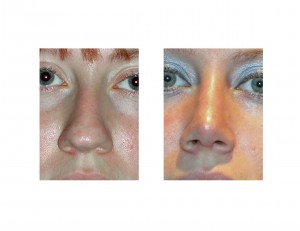Rhinoplasty surgery, in the purest sense of the term, implies changes to the external or visible parts of the nose. Since the appearance of the nose does not necessarily affect how it functions, your insurance will not cover any of the rhinoplasty procedure if the goal is to achieve an improved looking nose. For instance, your insurance will deny coverage if your primary reason for surgery is improving a nose that is unattractive, too large or crooked.

Your insurance will not only cover for these reconstructive issues but they will also cover for breathing difficulties of the nose. A deviated septum is the classic case but there are other internal structures of the nose that can be obstructive, most notably the turbinate bones. Difficulty breathing can also cause headaches and contribute to sleep apnea. All of these are medical issues because they dysfunctional. Many times, the physician’s examination alone is sufficient to provide adequate documentation but other tests may eventually be required including nasometry, CT scans, or sleep studies. One key area that your medical insurance looks for is…what non-surgical treatments have been tried ( and failed) to prove that surgery is necessay. (and the last resort) This usually means a trial course of steroids or other nasal swelling treatment strategies.

Do not let the urgency of your or your surgeon’s schedule override written confirmation of medical coverage. This is a common mistake. It is much better to know the financial facts up front (and then pay if you have to) than try and sort it out later when you are receiving bills and late notices from a variety of providers because it has been denied due to a lack of the required pre-determination. Remember, once you have it done without a pre-determination, the insurance company is not really under any obligation to pay after the fact. (even if it would have been initially qualified) Paying medical charges that are accrued at the rate of insurance billings are a lot higher than those charged for on a cosmetic fee basis. Let the insurance and pre-determination process run its course…or otherwise you may find yourself really paying through the nose.
Dr. Barry Eppley
Indianapolis Indiana


